Year 12 PE: Chapter 2 Biomechanics ALL
1/40
There's no tags or description
Looks like no tags are added yet.
Name | Mastery | Learn | Test | Matching | Spaced |
|---|
No study sessions yet.
41 Terms
Force
A 'push or pull' - causing a change in state of a body/object
Gravitational Force
This is the force exerted on the body/object due to gravity
Friction
This occurs when two surfaces come into contact with one another
Drag
An object that is moving through air or through water will experience a drag force, opposing the motion
Mass
The quantity of matter found in a body or object, typically measured in kilograms (kg)
Inertia
The reluctance of a body to change its state of motion either at rest or moving.
Momentum
Quantity /how much motion an object or body has
= Mass (m) x Velocity (v)
Impulse
Calculated as Force x Time
Conservation of Momentum
The conserving of momentum in a collsion
Summation of Momentum
Where body parts move in a sequence in order to maximise momentum
Force is first generated by the body parts with greater mass/inertia and then passed on to the smaller body parts - this allows maximum velocity
Newtons 1st Law of Motion
Law of Inertia
An object will stay at rest or continue to travel in the SAME direction at a constant velocity unless acted on by an external, unbalanced force
Newtons 2nd Law of Motion
The rate of acceleration of a body is proportional to the force applied to it and in the direction in which the force is applied
F= m x a
Newtons 3rd Law of Motion
For every action there is an equal and opposite reaction
When one body / object applies a force against a second body/ object then the second will apply an EQUAL force is the OPPOSITE DIRECTION as the first
Angular Motion
Body moves along a circular path - occurring around some type of axis (either internal or external)
Linear Motion
Is an object/body's change in position in relation to time in a straight line (rectilinear) or curved (curvilinear) path
Newtons 1st Law of Angular Motion
The angular momentum of a body remains constant unless acted upon by an external TORQUE
Newtons 2nd Law of Angular Motion
A torque applied to an object will produce an change in angular motion in the direction of the applied torque that is directly proportional to the size of the torque and the inversely proportional to the moment of inertia of the object
Newtons 3rd Law of Angular Motion
For every torque there is an equal and opposite toque
Torque
A force that causes an object/body to rotate around its axis
Angular Momentum
Angular momentum is how much angular motion (motion of a mass while it rotates) an object or body has.
= angular velocity x moment of inertia
Moment of Inertia
Moment of inertia is a tendency for a body/object to resist changes in rotary motion (rotation)
= mass x radius2 (radius of rotation)
Linear Motion - Distance
Distance measures a path travelled from start to finish, regardless of direction.
Linear Motion - Displacement
Displacement is defined as a change of position- how far it is from the initial position to the final position
Angular Distance
How many degrees an object moves around an axis
Angular Displacement
The difference between the initial and final angular position of an object-
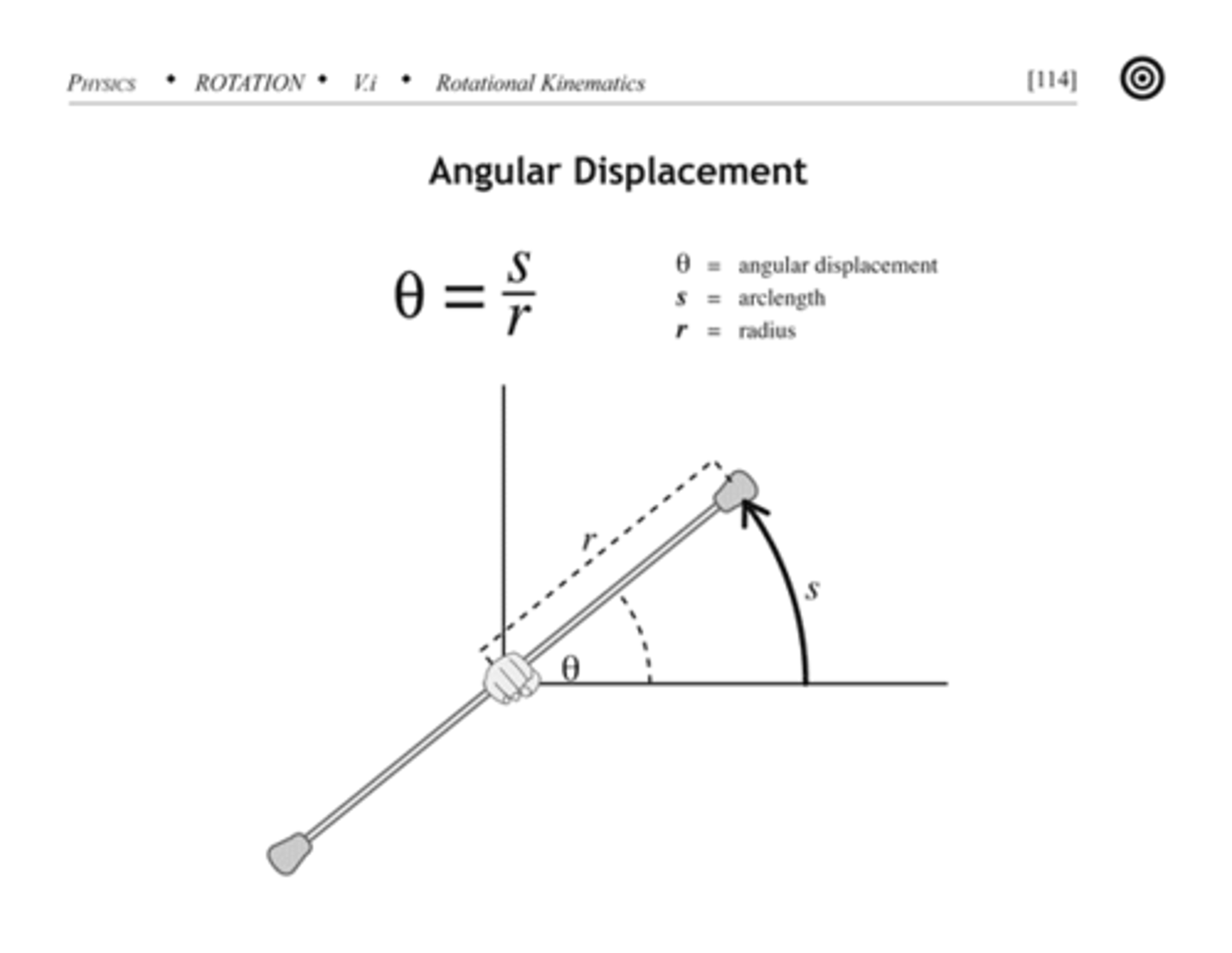
Angular Speed
The angular distance covered divided by the
time taken to complete the motion
Angular Velocity
The rate of change of the angular displacement of a body over time
Angular Acceleration
The rate of change of angular velocity, or how quickly a body changes its angular position (measured in degrees per second squared)
Factors Affecting Projectile Motion
Velocity - higher velocity = greater air resistance
Mass - lower mass = greater air resistance
Shape- more streamlined = less air resistance, allowing air to flow over with less drag
Surface area - greater surface area = greater air resistance, as more surface is exposed to the air (ie: a badminton shuttlecock)
Nature of the surface area - smoother will decrease drag and = less air resistance
Factors affecting the path of the projectile
Angle of release of the projectile
Height of release of the projectile
Speed of release of the projectile
Lever
Has three parts::
- An axis (or fulcrum or pivot point
- A resistance (or weight or load to be moved
- A force (or effort)
First Class lever
Resistance and force are on either side of the axis. Set up like a see-saw
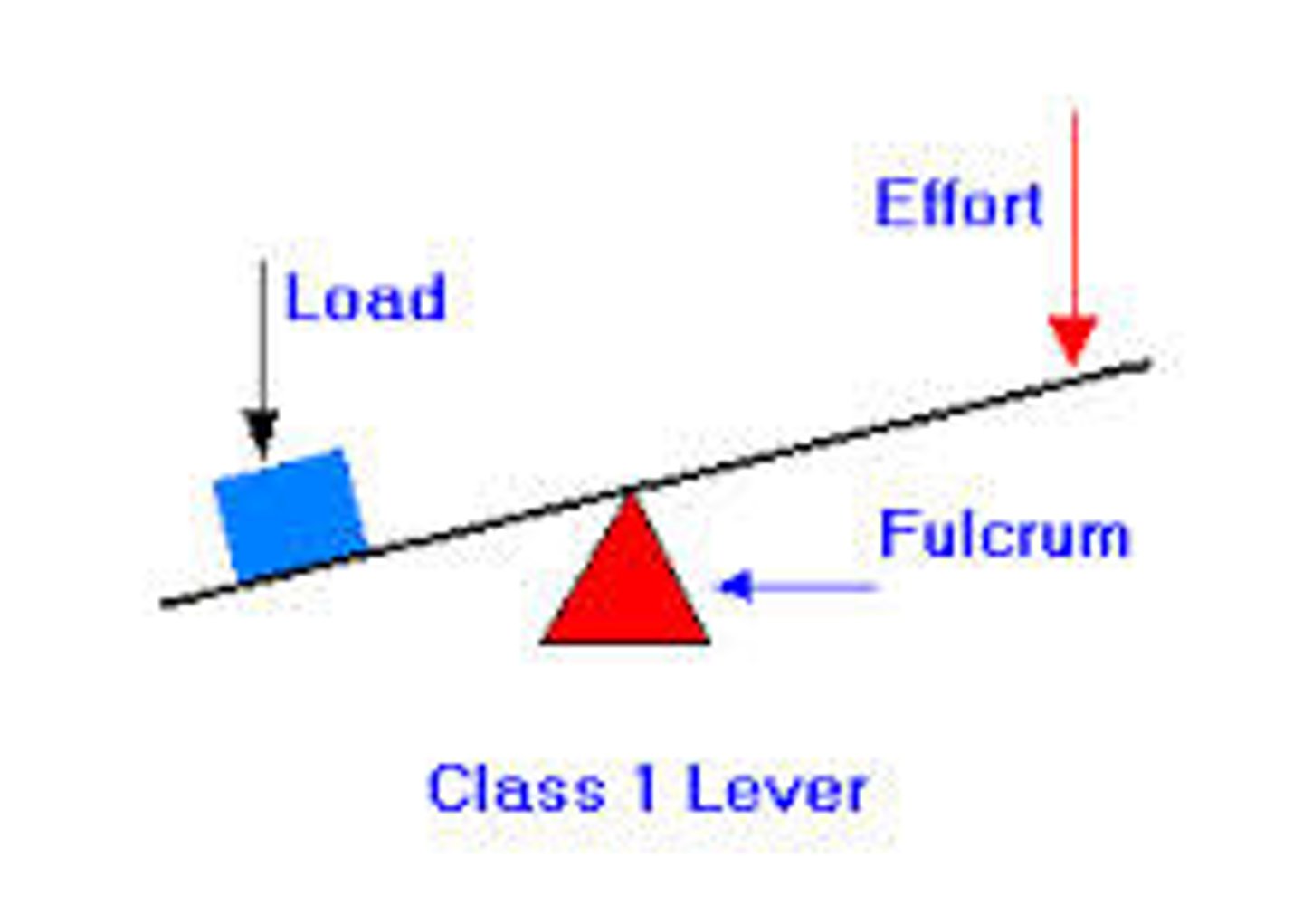
Second Class Lever
Resistance is between the force and axis
Found in the calf muscle.
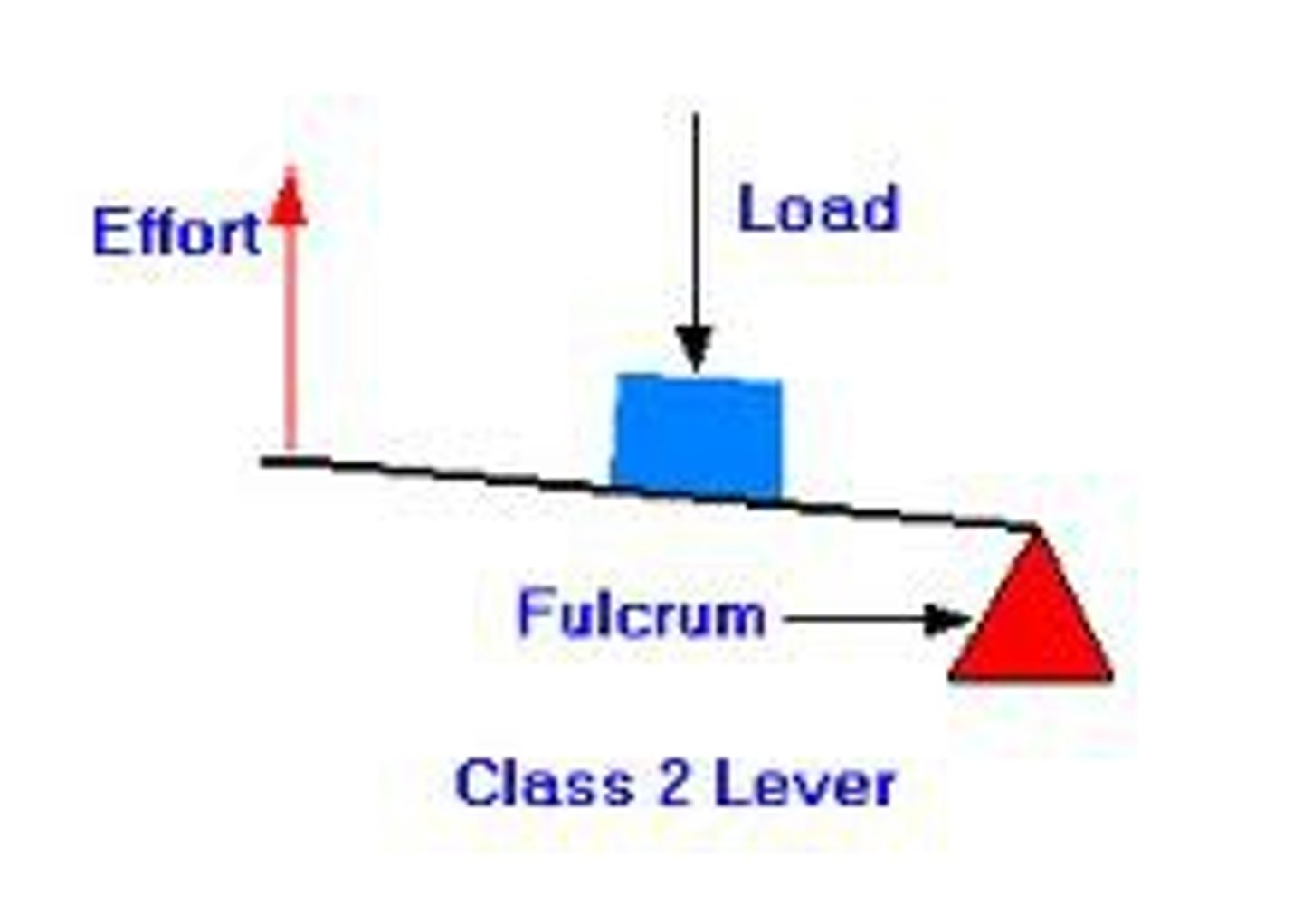
Mechanical Advantage of Anatomical Levers
Mechanical advantage = Force arm/resistance arm
The force arm is the distance between the axis and the force and the resistance arm is the distance between the axis and the resistance.
When the resistance arm is greater than the force arm, there is no mechanical advantage- the ratio is less than one- but the range of motion of the lever is increased.
Third Class Lever
Force is between the resistance and the axis
The most common type of lever both in the human body and in sporting examples of human movement.
They require greater force to move a given resistance, but greater range of motion and speed are gained.
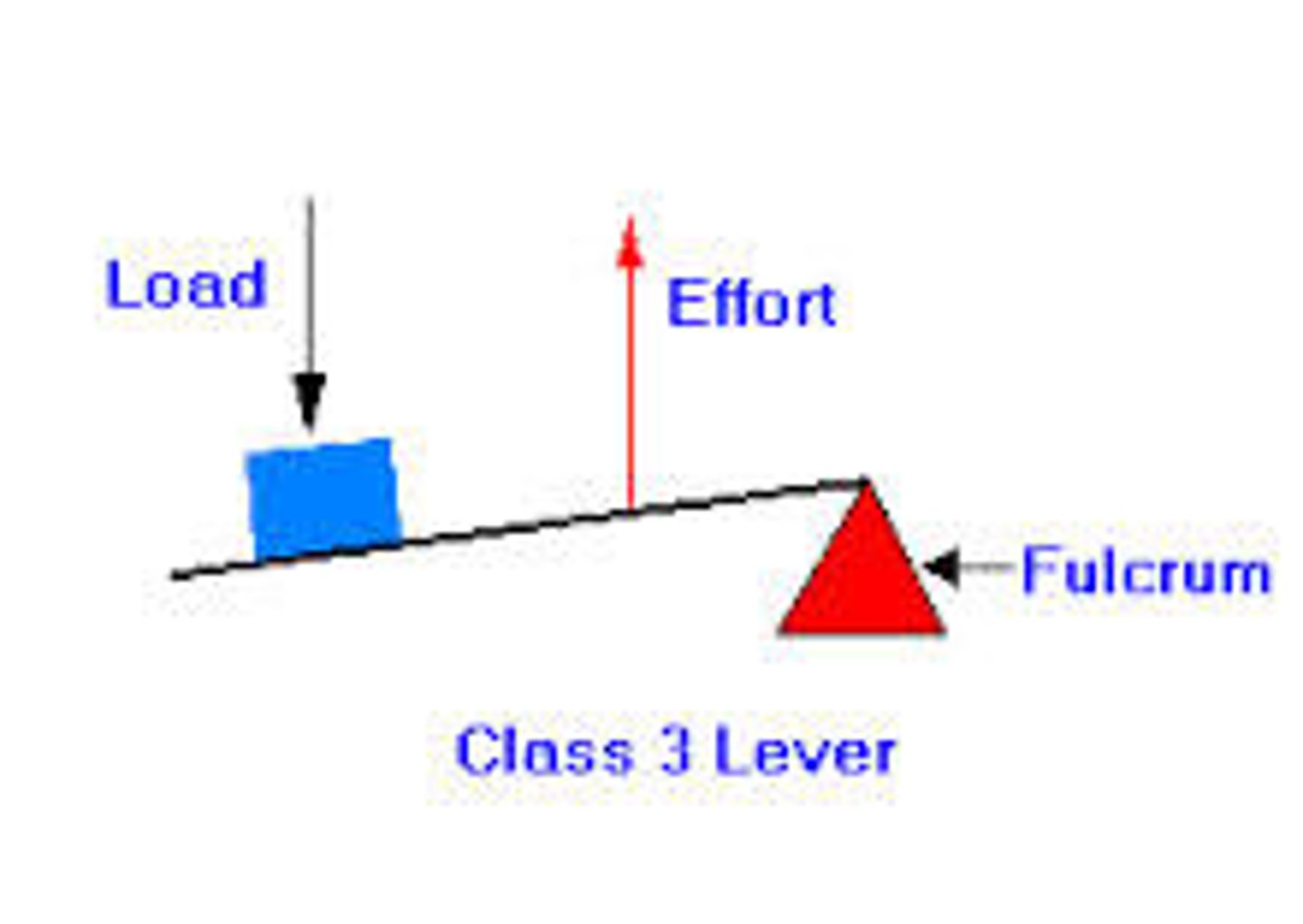
Equilibrium
there are no unbalanced torques or forces acting on a body and therefore are without motion or moving at constant velocity.
Stability
is the resistance to a disruption to equilibrium. Increase the stability, and it is more difficult to unbalance an object Decrease the stability, and it is easier to unbalance an object
Balance
is the ability to control the state of equilibrium - either when stationary or whilst moving
Base of Support (BOS)
This is the area bound by the outside edges of the body parts in contact with the support surface
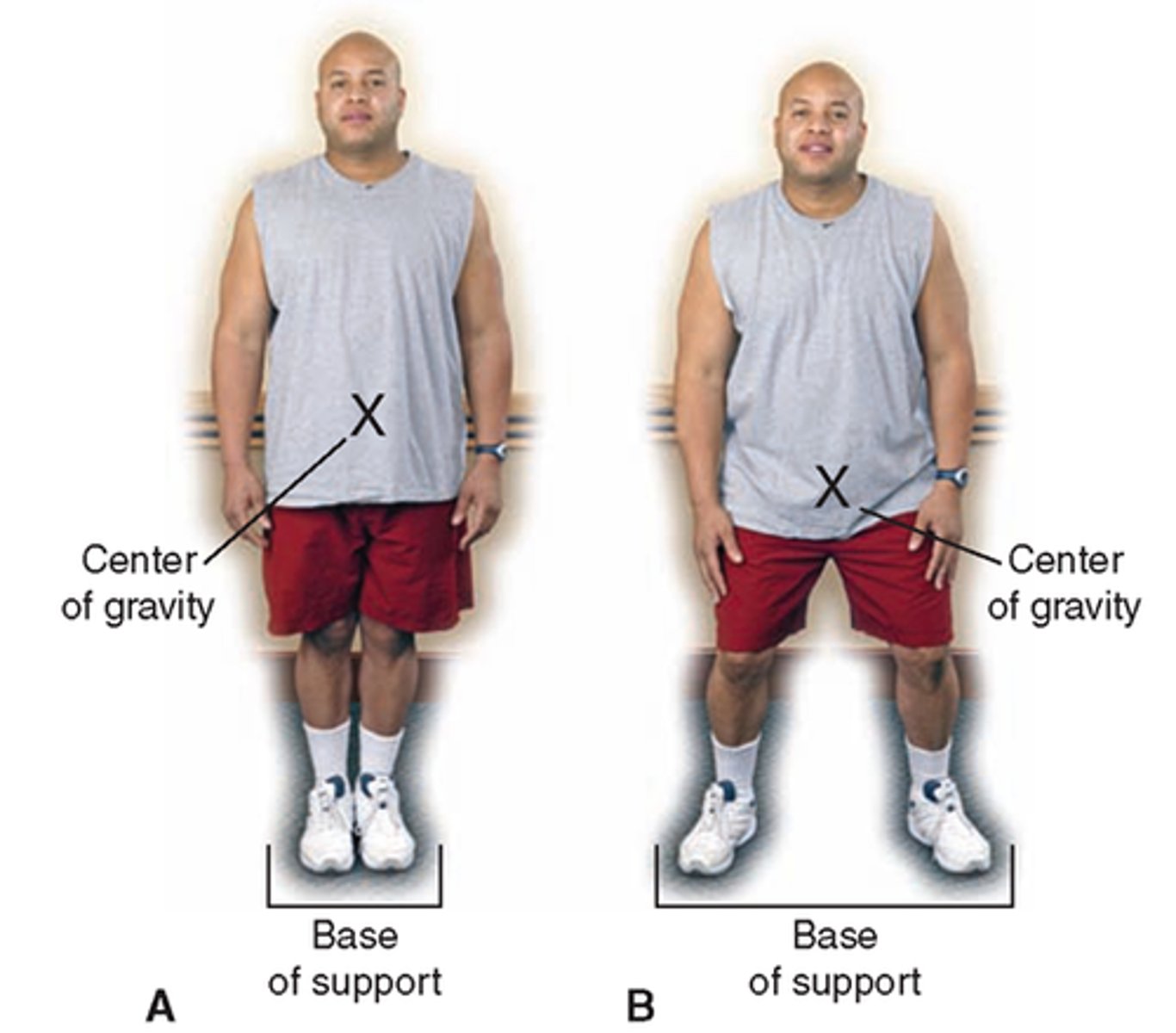
Centre of Gravity (COG)
A body or object's COG is the point around which weight is balanced/evenly distributed regardless of the position of the body
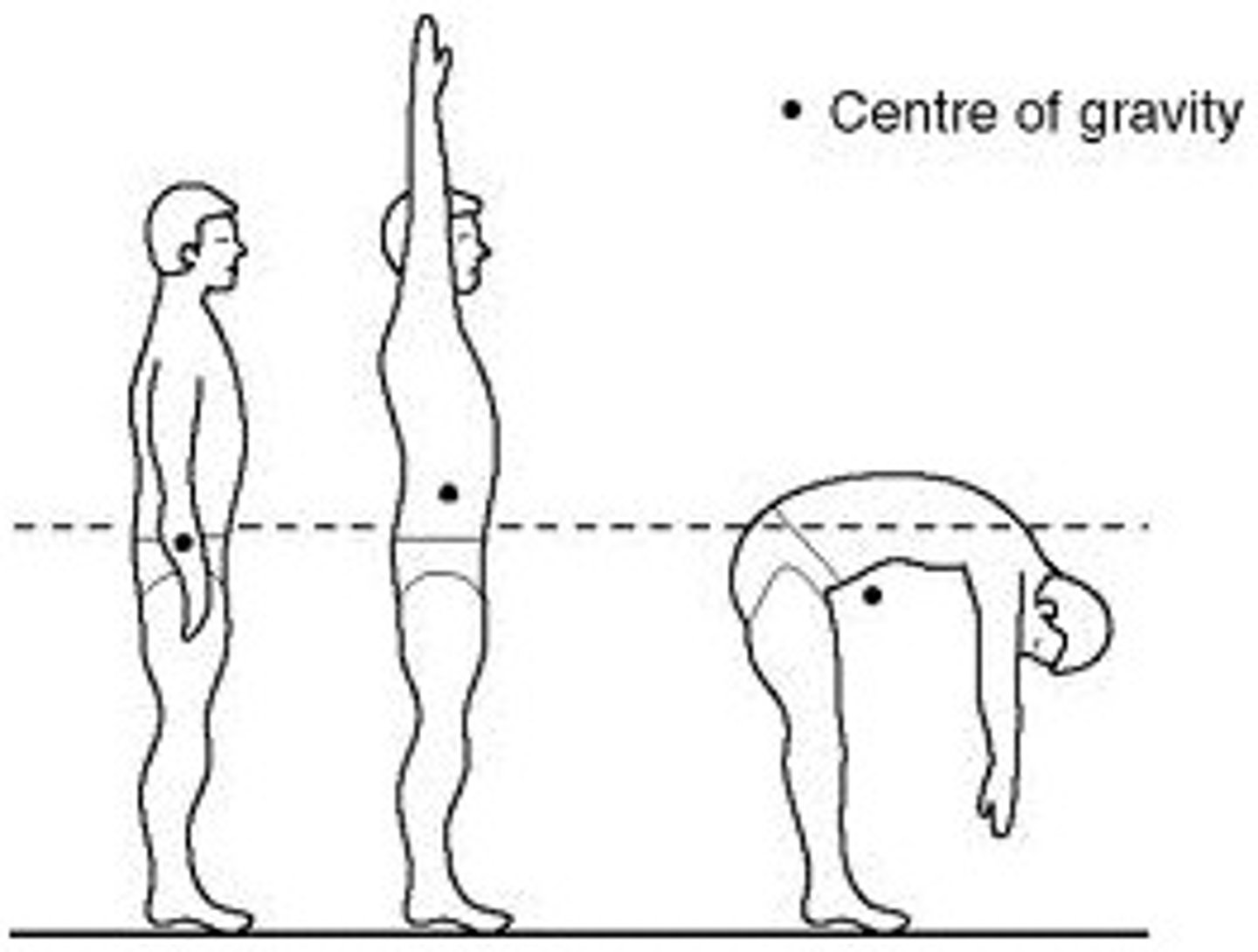
Line of Gravity (LOG)
An imaginary line passing through the COG showing the direction that gravity is acting on the object/ body